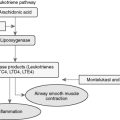CHAPTER 6 Patient Education
Table 6-1 Examples of Consumer Terms to be used in Patient Education
| Medical Term | Consumer Term |
|---|---|
| Analgesic | pain reliever |
| Arrhythmia | irregular heartbeat |
| Buccal | between the cheek and the gum |
| Diuretic | water pill |
| Hepatic | liver |
| Hypercholesterolemia | high cholesterol |
| Hyperglycemia | high blood sugar |
| Hypertension | high blood pressure |
| Hypoglycemia | low blood sugar |
| Inflammation | swelling |
| Metabolism | (drug) breakdown |
| Ophthalmic | for the eye |
| Otic | for the ear |
| Postural hypotension | fainting |
| Prophylaxis | preventative |
| Pruritus | itching |
| Renal | kidney |
| Saline | salt solution |
| Sublingual | under the tongue |
| Subcutaneous | under the skin |
| Topical | applied to the skin |
| Transdermal | absorbed through the skin |
Ball A.M., Smith K.M. Optimizing transdermal drug therapy. Am J Health Syst Pharm. 2008;65:1337.
PEIPB PEIPB. Guidelines on counseling. http://www.napra.org/pdfs/provinces/pe/Guidelines-on-Counseling.pdf. Accessed September 22, 2008
Lexi-Comp Online. Nitroglycerin [patient education leaflets – adult]. http://online.lexi.com. xxx. Accessed September 23, 2008
AHFS MedMaster. How to use metered dose-inhalers. http://www.safemedication.com/Administer/DoseInhalers.pdf. Accessed July 2009
REVIEW QUESTIONS
(Answers and Rationales on page 333.)




